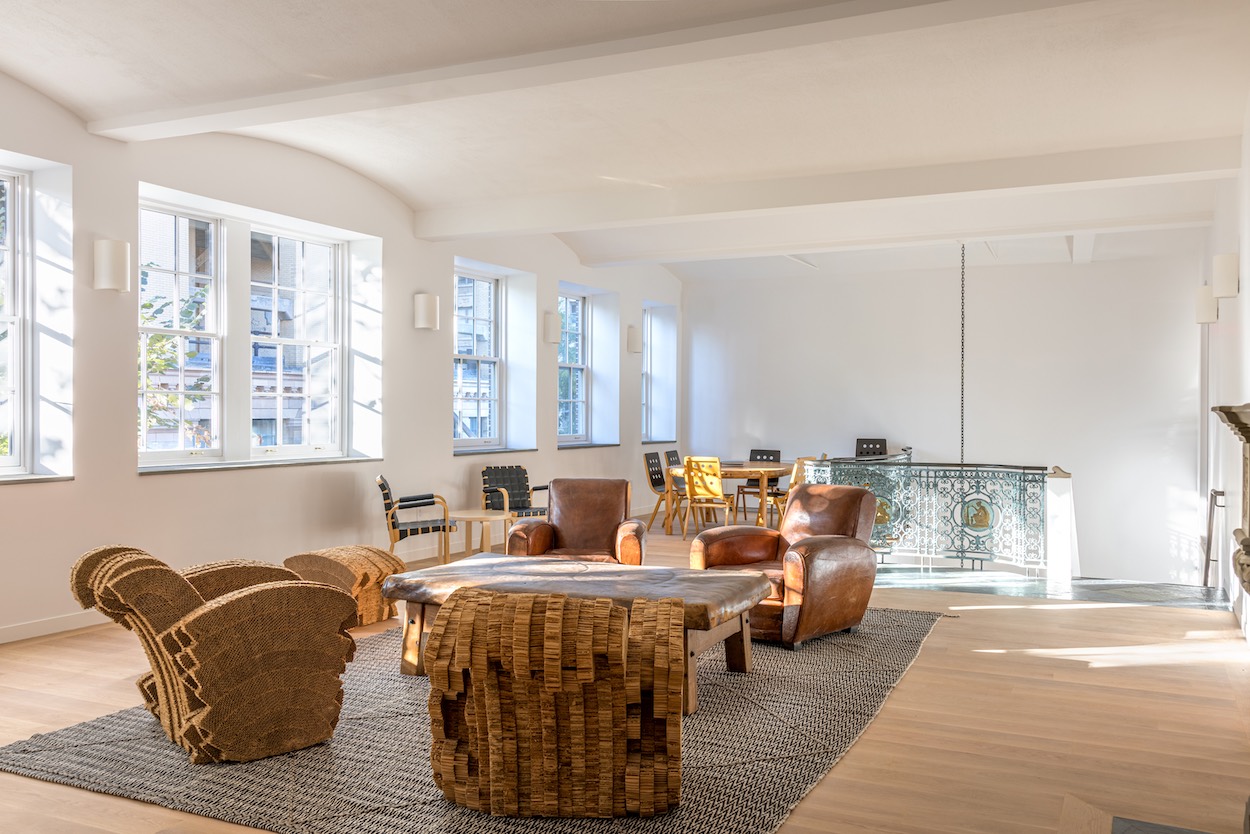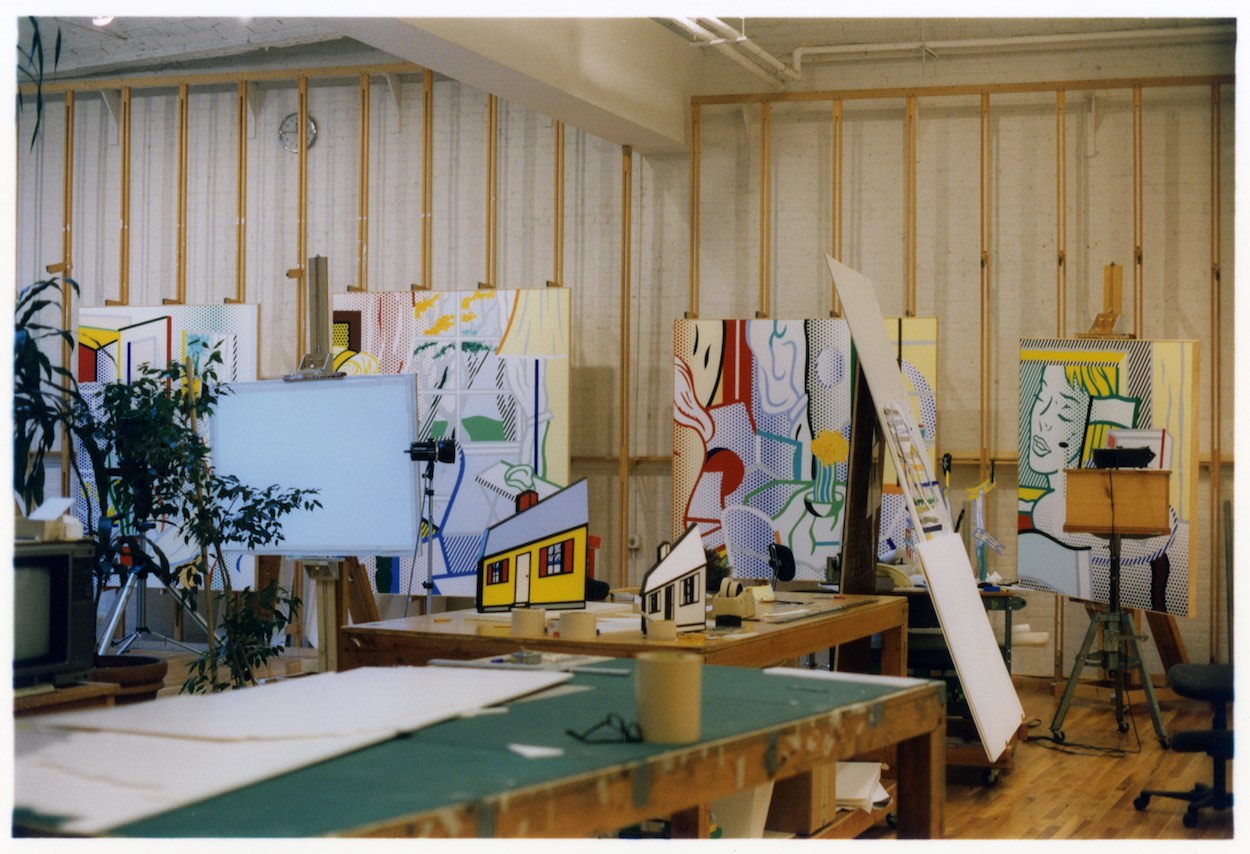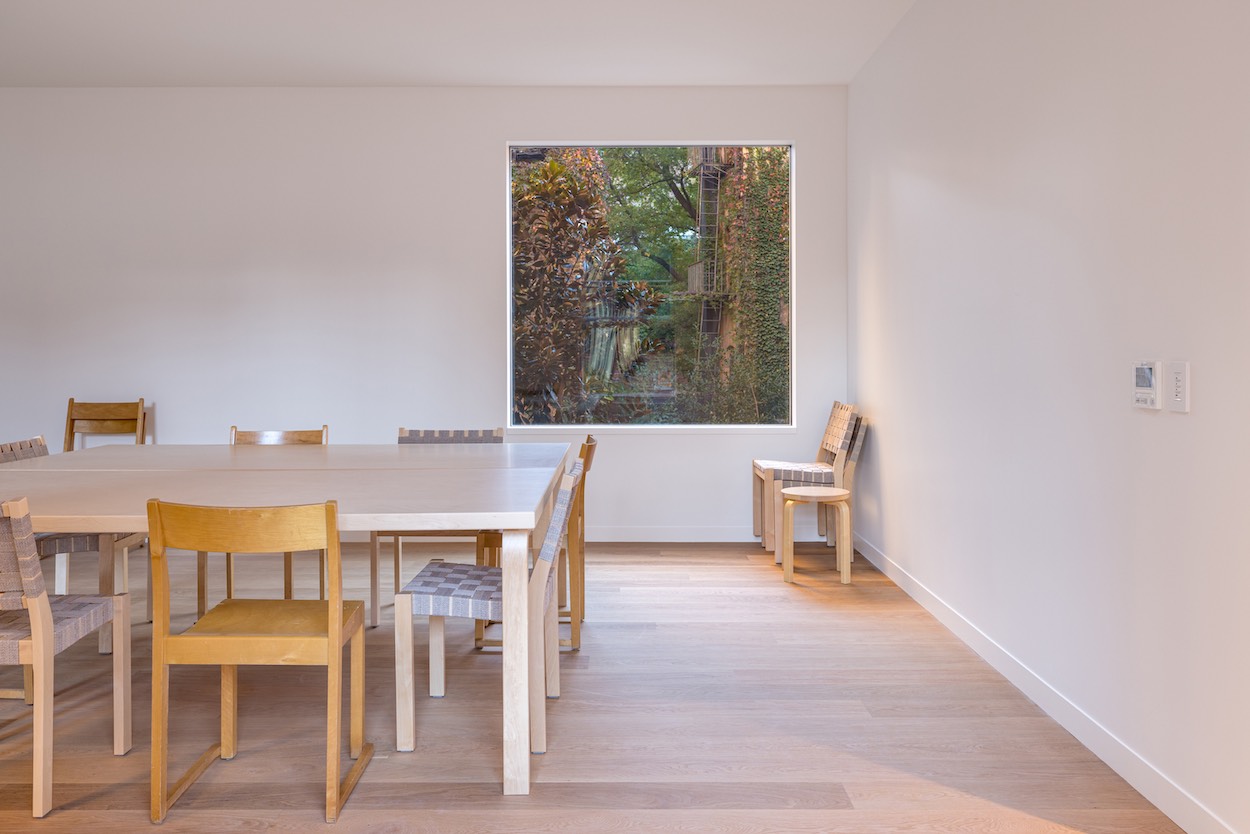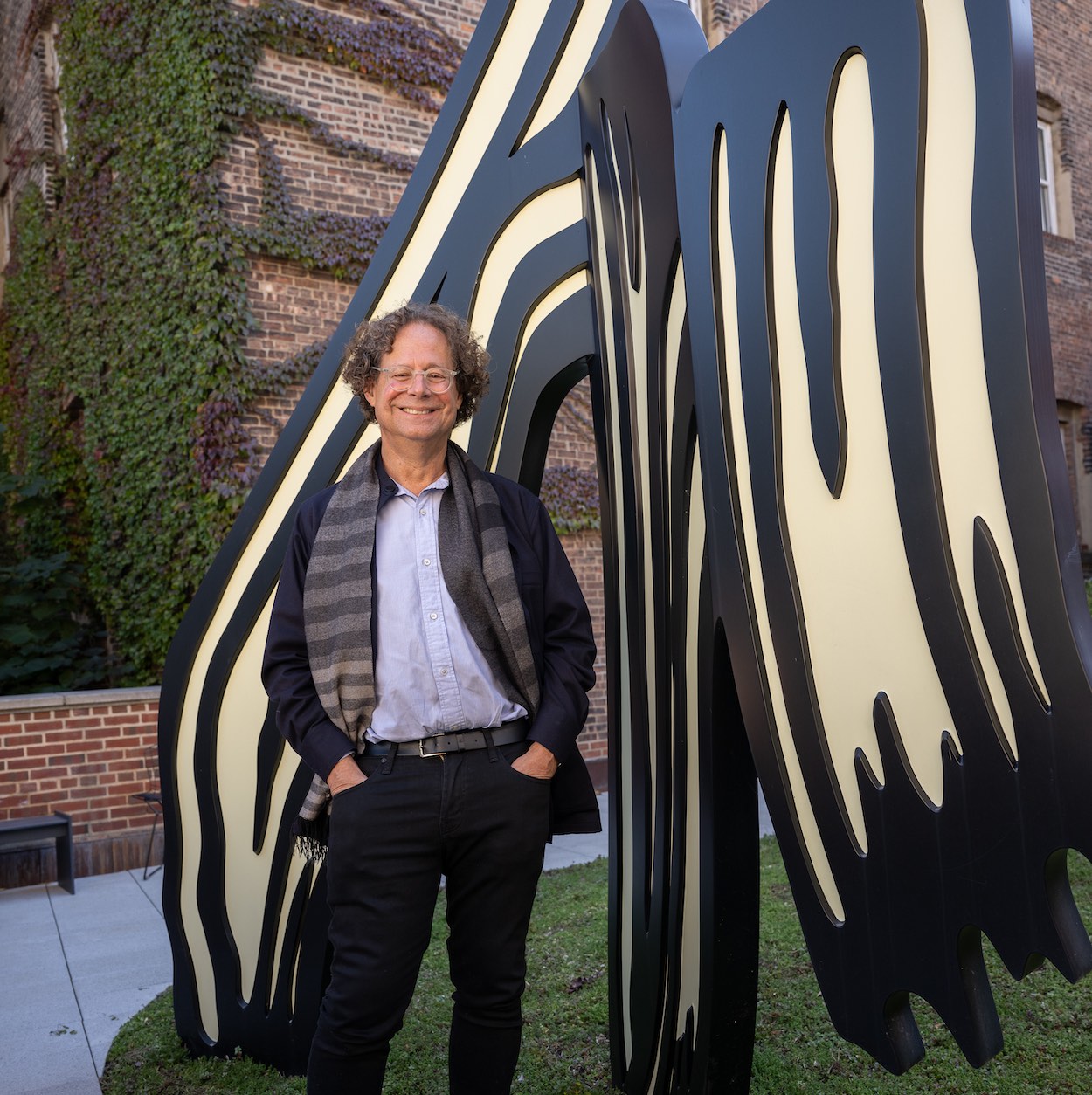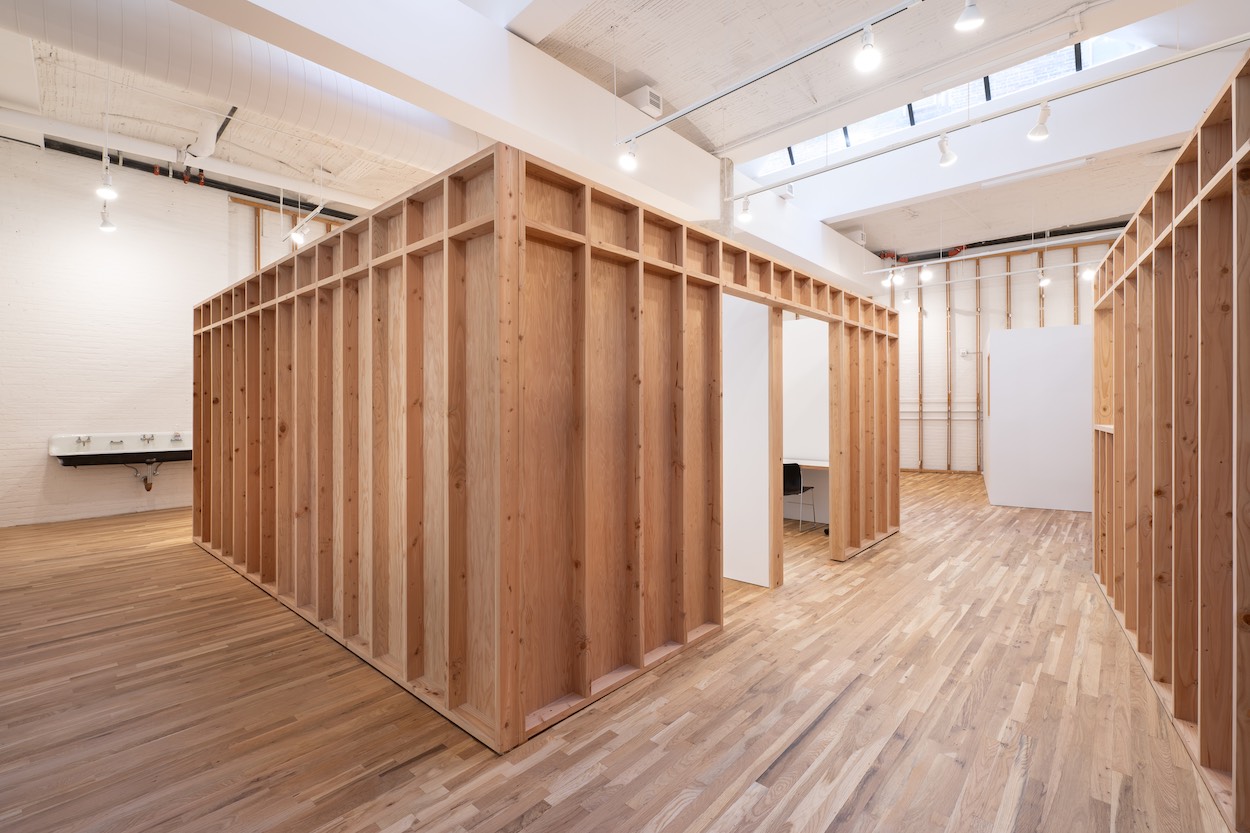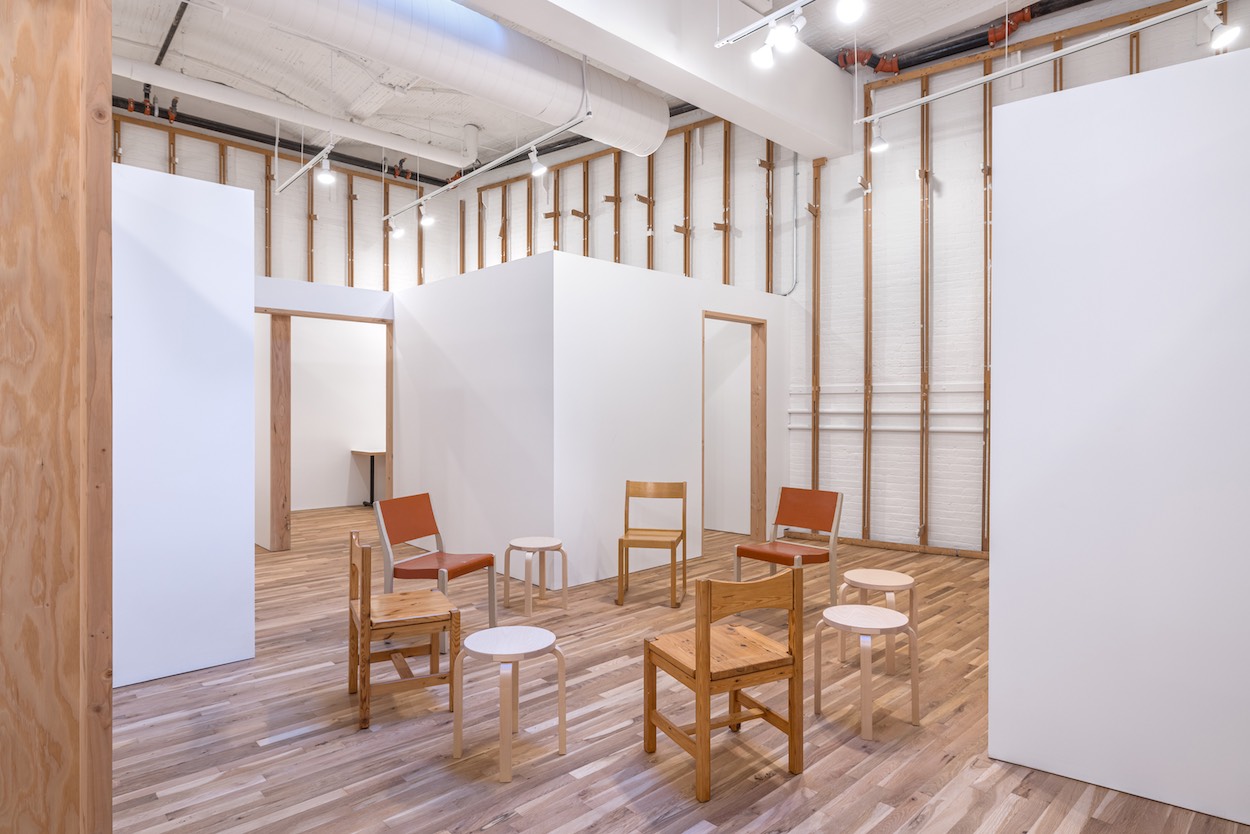Some may have been aghast when the Whitney Museum proudly threw open the doors to a “full renovation” of Roy Lichtenstein’s former studio and home in the West Village. The museum acquired the space early last year—a donation from the late artist’s namesake foundation, created and presided over by his widow, the philanthropist Dorothy—to house its Independent Study Program (ISP). But Roy, who once led seminars for the program, “wouldn’t have wanted” the space to be enshrined as an unchanging landmark, Dorothy told the New York Times at last week’s opening preview of the space. It is, however, a landmark, and the New York City Landmarks Preservation Commission approved its refit in 2022.
Thanks to Johnston and Marklee, it now resembles the most idealized version of the vaguely industrial studios where the art school cohort ask their brains to make sense of space, color, and symbolism; where they develop the muscle memory for the craft that, with dedication and a good stroke of luck, will become their livelihood. Its century-old pine floors remain intact, and warm West Village sunlight bounces around its white-washed walls. Not yet paint-stained porcelain sinks gleam from within a cavernous inner chamber housing 15 standalone plywood studios for study, creation, and exhibition. Living space can host international fellows whose induction to the program requires them to uproot their lives and relocate to New York City. A landscaped rooftop garden hosts Lichtenstein’s Garden Brushstroke—a thought to warm the soul and stoke a touch of envy within anyone who has pulled all-nighters to literally watch paint dry in dank and frigid university art studios.
